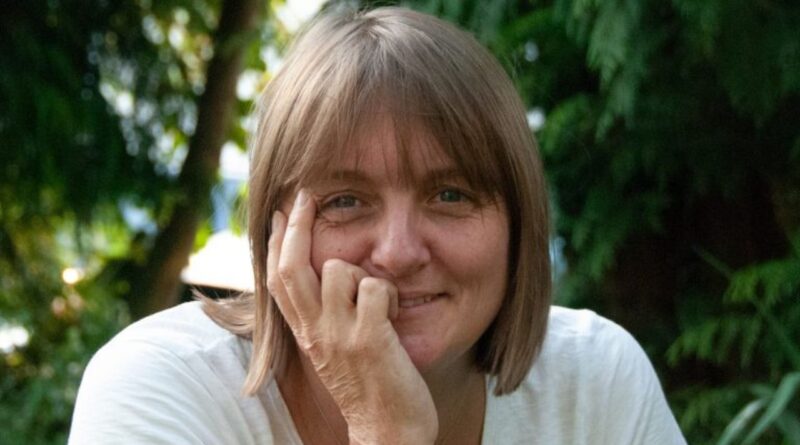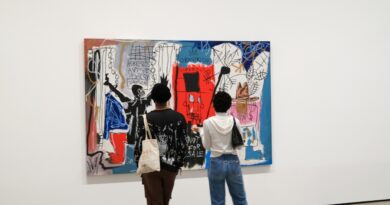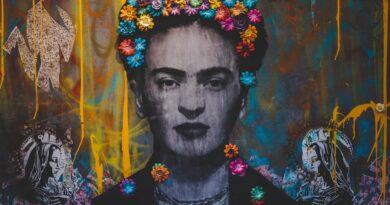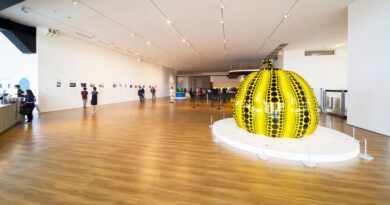Artist Spotlight Sara Core
In this interview, Sara Core shares her journey into the world of clay artistry, highlighting how an accident in 2004 significantly shifted her path towards becoming deeply involved with clay by 2008. She discusses the therapeutic nature of her work, her creative process, and her involvement in community and educational projects. Core also reflects on the role of artists in communities, her personal inspirations, and future ambitions.
Q: Can you describe your experience following your major accident in 2004 and how clay found its way into your life in 2008? Before your accident, had you worked with clay or other crafts? Was this a new direction for you?
I came to work with clay following a major accident. The accident was in 2004 and clay found me in 2008 when I started my way on the Foundation in Art and Design at Central St Martins. There is a considerable exchange of between this and the nature of ceramics, because I suffered major burns which required a huge amount of intervention and care to recover from, but which ultimately transformed me into the person I am today.
It was the part time track and meant I could really build my stamina gradually in terms of travelling on the tube and negotiating escalators. But it also gave me the opportunity to absorb and develop my direction.
My sister is a musician, my grandmother was a milliner and my grandfather was a cabinet maker, so being a maker had to emerge somewhere along the line. Clay is a new material to our family though; one more voice! The process of the Foundation in Art and Design at CSM was a hugely positive one; I found myself occupying the ceramics/plaster workshop most of the time. When one day I was in the metal workshop one of the technicians asked me why I wasn’t in the ceramics studio, where I belonged, and he had a point. When the unconditional offer of a place on the ceramics degree at CSM came, I had to listen to that. Go where you are loved! Other than that I have never questioned the move towards ceramics, as it felt such a natural fit for my practice.
Artistic Approach and Courses
Q: You throw on the spinning wheel similarly to how a wood turner uses a lathe. Is there a natural inclination to create something very round, symmetrical, and uniform? How do you incorporate mindfulness into your work and explore your art? Can you talk about your experience with the Japanese kick wheel and how it influences your work?
The wheel is a ‘side on’ approach to making, in that we form the walls of a pot, so in that sense it is very similar to a wood turning lathe. But there are differences, when we are throwing on the wheel we are moving all of the material and rearranging it from the middle to the surface and back again. We are also forming the inside at the same time as the outside, so I am not sure that is the same with wood turning.
The wheel, or circle, is a universal shape which has huge metaphorical and symbolic relevance to us as a species. We find it in all aspects of life, religions and belief systems. Life is said to evolve in cycles, so the language of throwing on a wheel is very much connected to that for me. Of course once you become proficient at the wheel making uniform round and symmetrical forms is more possible, but it was not what attracted me to the wheel or why I continue to go back to it.

We are moving our bodies through space when we throw, with the clay itself being transformed in the action of our doing. It is unstable and vulnerable and eventually becomes stone (when it is fired), so it is in a state of continuous transformation. Throwing in particular requires a thoroughness of body and mind concentration that seems a natural extension of the actions we take in the process. We are pulled into the process. In that sense it seems hard to find in any other making process. No two lumps of clay are the same and no two sessions of throwing can be the same. When we bring a form up on the wheel we are working with gravity, natural materials, our own physical strength, or mood and a changing state of material, all moving. The result is a reflection, or memory of that process and moment, or series of moments in time and in fact, are a starting point for the next piece. This is the way to access mindfulness at the wheel but the effects of this are far reaching, outside of the throwing session and beyond the studio walls.
My wheel is a Leach Wheel; this is an indirect drive, treadle wheel, and is an original as defined in the Bernard Leach tradition. This is a wonderful creature to live with. The physicality of this Leach Wheel means it becomes an extension of one’s body and the intimacy between the maker and the wheel is more available than when an electric wheel is used. I learned on a Leach Wheel but beginners often find it such an overwhelming experience, electric wheels are very helpful as well.
Personal Reflections and Inspirations
Q: Your work seems to reflect a very physical handmade process. Do you view the process as an outpouring of energy, a contemplative mindful process, or a mix of both? How has your accident and the resulting permanent fatigue condition influenced your approach to ceramics and your relationship with the physical act of making?
The physical doing in making is an emotional and creative relief, so in that sense it is an outpouring of energy, but the process of making expands beyond the doing into a reflective and transformative stage, which itself becomes a starting point for new work. In that sense it is a mix of both outpouring of energy and a contemplative mindful process.
Educational Endeavors
Q: How did you become interested in the idea of education through clay? Can you share more about your involvement with community projects, especially during your time at Central St Martins (CSM)? How have you adapted to the challenges posed by the Coronavirus crisis, especially with the #Stayathome clay parcels and online classes?
I have always had a drive towards education, either for myself or others. The exchange seems entirely natural to me. The world of ceramics is a generous one, because no clay or material will behave the same way in any firing. This is entirely natural so ceramicists tend to be fairly generous with their knowledge. My own journey into clay a kind of self-medicated therapy. I often say, science saved me but something else cured me. I have seen it work in community projects that I initiated and that I was involved in through Central St Martins (CSM), where making things together brought about an incredible sense of agency in people who may not ever have experienced that for themselves. It is so profound that it delights me every time it happens.
CSM are famous for giving students industry experience and one of the clients we worked with as part of this process was Clayground Collective. Clayground were on a ten year mission to bring clays of the world together and I learned a lot from working with them post-grad as well. I have many experiences of welcoming unwilling volunteer makers into a space only to then spend many hours ‘in conversation making with clay’, so that the end result became almost a surprise to them, in terms of the hours flying by but also in the clay work that we made together. My final work at CSM took clay to Coventry to work with a group of Family Carers. All were Gujarati speakers and had limited english. I do not speak Gujarati, despite my best efforts, so our route to communication was a visual one (and lots of cups of tea!). The result was a collection of tableware that celebrated the work of family carers using motifs from drawing workshops I facilitated with the group, ‘The surface glittered out of heart of light’. A film was made of this experience …https://vimeo.com/70679618 ‘I work with my heart but I reach with my hands’.
Working on the #Stayathome parcels, was a collaboration as well. I worked with a fellow potter/teacher and we sat down before lockdown actually happened and had a sort of crisis meeting. We asked the question, ‘What can we do to help ourselves and our communities get through this paralyzing time?’ It was a way of coping and of reaching out simultaneously.
Learning new skills in moving online was a real pleasure. Passive viewing is a characteristic of the online world, which is good as far as it goes but the demand for activities has always been there.
People migrated well but as the restrictions on our movement have eased, the online element has become less of a draw for people and I completely empathise with that. #Stayathome has become #clayathome. The clay kits developed in crisis have evolved into a beautifully easy access mindfulness with clay experience and come with a downloadable guided meditation to ease makers into the Core method of absorbing and relaxing approaches to clay making.
Artistic Philosophy
Q: Your sculptural work is largely about ‘being a woman’. Can you delve deeper into this theme and how it manifests in your creations? How do you perceive the role of an artist within their community or the wider art world?
The continuum of life appears in my work: we play many roles in life but the main lens through which I see is as a woman. I have a conversation with this through the free making of figurative sculpture. In this approach I sit with a piece of clay and begin to make without aim. The clay will present itself in such a way so that quite often the results figurative and are very distinctly male or female sculptures.

It may be that I come back to continue the work another day so there is a period of reflection between each session of making, but the whole process becomes a meditation.
This concludes when the firing cycle is complete, which itself allows me to step back from the work and reflect on it.
The common-day quality of traditional ceramics allows me to place my work ‘within the surrounding world’, and in terms of traditional of ceramics, that means the domestic sphere. Traditionally this sphere is held by a female. However, I take a playful approach to function because the forms themselves are universally known (bowl, cup, mug for eg), plus the stereotypes of female domains have become so fluid now that every object can be given new meaning. I hope my hand held pieces are therefore more capable of generating a contemplative response from the person holding or using them. This is a valuable experience for everybody.
It is no accident that ceramics are very good at creating hollow pieces; these are wonderful vehicles as a meditation on surface and the boundary that separates and connects the inner and outer world. It is a difficult thing to define the role of an artist, but more recently I think artists have been looked to for harmonising the tempestuousness of our daily lives. There is a risk that this is oversimplified, because harmony is not exact and can look and feel the different for each of us. Engagement and care are central my work, both as a topic to be reflected upon and as a way of creating, such as when I am teaching.
Future Endeavors and Projects
Q: Are there any upcoming projects or collaborations you’re excited about? How do you envision the future of ceramics and its role in community engagement and wellbeing?
I am working on an expansion of the teaching element of my practice: lockdown has shown me that engagement with clay in a group context is something that people want to experience. I think the Great Pottery Throw Down has brought clay into the every day for more people than ever. I do feel that the time for a more nuanced approached to clay making is around the corner. We are quite rightly focused on environmental issues and clay has a unique ability to highlight and address many of the private concerns that people may be holding on to around this. I am looking forward to sharing making time with people are looking for a deeper connection with material. My method arrived after a very specific set of circumstances but the way that wellbeing has been aligned with clay work seems a natural externalisation of my own philosophy.
I am delighted that I have spent many years working on this approach and am looking forward to sharing it with as many people as I can.
Radio Dacorum Interview
Discover the transformative power of clay artistry through the lens of community artist Sarah Core. In her conversation with Leslie Tate on Radio Dacorum, Sarah delves into how clay work promotes wellbeing and fosters community spirit. This discussion highlights the therapeutic and connective aspects of art, offering valuable insights for anyone interested in the healing arts or community engagement. Engage directly with Sarah’s experiences and perspectives by accessing the embedded player on our page.
For those interested in connecting with Sara Core or exploring her work further, you can visit her website at sarahcorearts.com and follow her on Instagram @sarahcorearts to stay updated on her latest projects and artistic endeavors.



